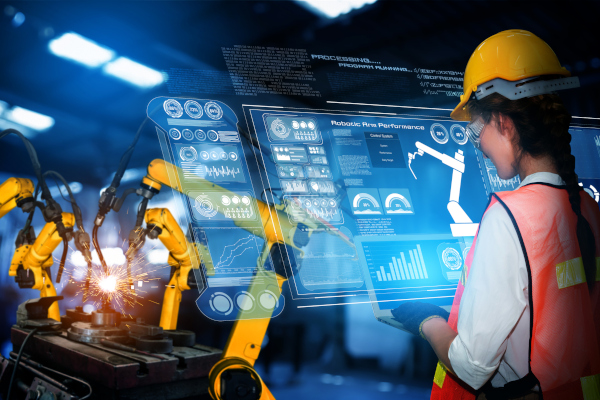“We believe the U.S. is in the early stages of a manufacturing supercycle,” wrote Joseph P. Quinlan, head of CIO market strategy at Merrill and Bank of America Private Bank.
The term “manufacturing supercycle” caught my attention. At the Reshoring Institute, we’ve been reporting on robust growth across all manufacturing sectors in America, particularly since the pandemic ended. The pandemic was a real eye-opener for manufacturers and the risks of long global supply chains. Companies struggled to cope with the open-closed-open-closed cycle of factories in China, delayed shipments, and canceled orders. As a result, many companies started rethinking their worldwide manufacturing locations, including considering bringing manufacturing back to America. What we are seeing is slow, steady growth in the reshoring of manufacturing and sourcing.
So why are analysts suggesting we are entering a manufacturing supercycle? These analysts and economists are reacting to where investment dollars are going, and now the money is going to U.S. manufacturers, after nearly 30 years of underinvestment. The U.S. government’s investment dollars are coming from the three enormous funding bills passed by Congress in the past two years. The Inflation Reduction Act, the Chips and Sciences Act, and the Infrastructure Act are pumping billions of dollars into new projects in America.
The three funding bills
Under the Inflation Reduction Act, funding for green-energy projects such as solar farms, wind energy, and battery-powered vehicles is available and beginning to have a magnifier effect on domestic production and jobs. The Chips and Sciences Act has funding for the building of new semiconductor factories starting in Arizona, Idaho, New Mexico, Texas, Ohio, and New York so far. But this Chips Act also funds semiconductor design companies and raw materials suppliers, as well as packaging and finishing companies – the entire semiconductor supply chain.
The Infrastructure Act is essential funding to repair our roads, bridges, rail tracks, airports, and seaports - all essential to support manufacturing in America. It also earmarks funds to develop EV charging stations across America, supporting more EV cars and trucks and reducing auto emissions that contribute to greenhouse gasses.
These three pieces of legislation are fueling a supercycle of manufacturing in America.
This is not your grandfather’s manufacturing
The redevelopment of manufacturing in America is very different from the manufacturing of 50 years ago. Many of the manufacturing tasks that were historically done by unskilled workers for minimum wages are now handled by computers and automated machinery. Instead of putting pegs in holes, workers now run the robots that do this work. Manufacturing today requires higher-skilled and higher-paid workers. Consider the United Auto Workers who are now on strike for higher wages and a share in the corporate profits. Their jobs have changed to include more automation, higher skills, and the building of electric vehicles. Today’s auto workers operate machinery and robots on a fully automated production line.
What does a manufacturing supercycle mean for supply chain professionals?
The expected growth in American manufacturing over the next few years will shift our focus away from global sourcing and manufacturing, to developing domestic sources with fast turnaround times to serve domestic production. More emphasis will have to be placed on logistics and warehousing and redeveloping the supply base that had previously moved to Asia.
Some of the changes I expect to see include:
• Scramble for commercial real estate to build new manufacturing sites;
• Continuing truck driver shortages affecting freight capacity and timely deliveries;
• Faster turnaround times demanded of suppliers and manufacturers;
• Higher prices as compared with China, on materials and parts;
• Need to redevelop suppliers that had closed businesses or moved to China over the past 20 years;
• A robust economy fueled by new investment over the next few years.
Buckle-up! Here it comes.
About the Author
Rosemary Coates is the executive director of the Reshoring Institute and president of Blue Silk Consulting, a global supply chain consulting firm. She is a best-selling author of 42 Rules for Sourcing and Manufacturing in China and Legal Blacksmith - How to Avoid and Defend Supply Chain Disputes. Ms. Coates lives in Silicon Valley and has worked with over 80 clients worldwide. She is also an Expert Witness for legal cases involving global supply chain matters. She is passionate about Reshoring.
SC
MR


Latest Supply Chain News
- Made in Mexico, manufactured by China
- Retail sales see gains in October, reports Commerce and NRF
- Balancing green and speed: Home delivery insights from the pandemic era
- AdventHealth named top healthcare supply chain by Gartner
- Geopolitical readiness in supply chains: Strategic challenges for leaders
- More News
Latest Podcast

 Explore
Explore
Topics
Business Management News
- Made in Mexico, manufactured by China
- Retail sales see gains in October, reports Commerce and NRF
- Balancing green and speed: Home delivery insights from the pandemic era
- AdventHealth named top healthcare supply chain by Gartner
- Unlocking retention: The role employee engagement plays
- Can supply chain managers embrace an entrepreneurial mindset?
- More Business Management
Latest Business Management Resources

Subscribe

Supply Chain Management Review delivers the best industry content.

Editors’ Picks




